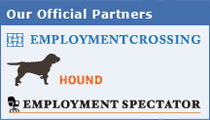First Name_Last Name_Resume.Doc: Optimizing a Digital Resume
|
|
Naming the document
The optimization of a digital resume begins at the very naming of the document, but most people fail to realize this. It is common to find resumes attached in Ms Word or other formats with generalized names like ''My Resume,'' or Resume1, Resume2, etc. So, a recruiter is usually left with hundreds of ''My'' Resumes on his or her desktop.
Recruiters have resigned themselves to the situation, and accepted the task of renaming shortlisted documents as part of their job. However, it remains that in all fairness, the task of properly naming a document, at least to the extent of differentiating itself from others and identifying itself with the candidate, belongs to the applicant. A recruiter likes applicants who use the form of ''first name_last name.doc'' for naming the digital resume, for it reduces the workload of the recruiter and shows professionalism of the candidate.
Keyword optimization
Keyword optimization remains one of the most ignored and most essential parts of digital document optimization. Essentially, keyword optimization of a resume involves the following:
- Finding keywords from individual job advertisements and using them in the resume for electronic search enhancement: This is a function of specifically tailoring a resume for a specific job.
- Finding keywords from job advertisements of the same category as the job applied for, and including them in the resume: This is useful for creating generalized resumes or providing the basic vocabulary used in the content.
- Positioning keywords: Keyword positioning is most relevant when placed at the beginning – the beginning of the document, the beginning of a paragraph, the beginning of a sentence etc.
- Marking keywords: Keywords marked in bold have greater strength, but bold keywords spread throughout the document without rhyme or reason shows bad practice. To solve the issue, keywords must be present where the phrase or statement may be in bold lettering due to normal structure of the document. This means in headings or subheadings only. So, it is essential for headings and subheadings in a resume to contain keywords.
The objective statement is a powerful tool for optimizing a digital resume. Its position at the beginning of the resume, and the fact of it being the opening paragraph, has great relevance as far as keyword optimization for a digital resume is concerned. Also, from other points of view, the objective statement is of great importance in guiding and containing the focus of the reader of the resume.
Keywords that must be included within the objective statement include the title of the post applied for, the minimum education qualification sought by the job, the candidate qualities sought in the job advertisement, and the physical location of the job.
If a job asks for a bachelor's degree, you mention the bachelor's degree as a keyword, and then you can mention your higher or additional qualifications. When optimizing a digital resume, mentioning your Master's degree and expecting the search engine to assume your Bachelor's is a folly.
If the job is in a particular locality, like Washington D.C., it is helpful to mention the fact that you are looking for jobs in and around Washington D.C. in the objective statement itself. Another thing, you should never miss is mentioning the title of the job offered in the objective statement itself. So, if the job is for an Associate Engineer, you need to say that you are looking for the job of an Associate Engineer or similar.
A properly optimized objective statement helps you enormously both in the case of electronic and human screening. While the advantages in case of electronic screening is obvious, even in the case of human screening of resumes, if the reader finds prima facie requirements mentioned in the first paragraph, or the opening lines of the resume, the resume stands a better chance for being shortlisted.




